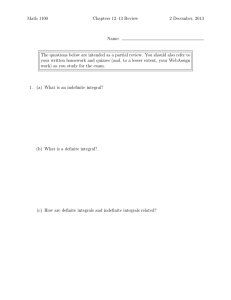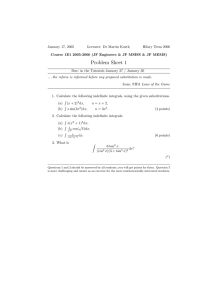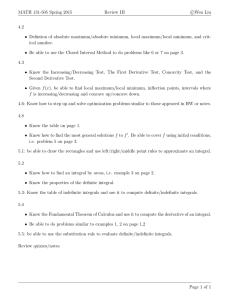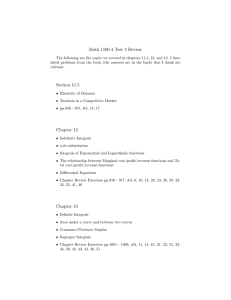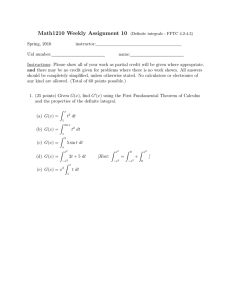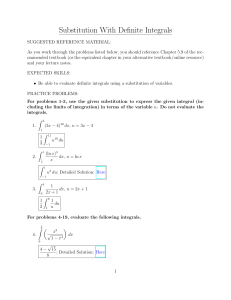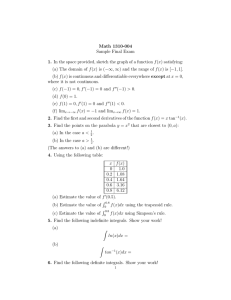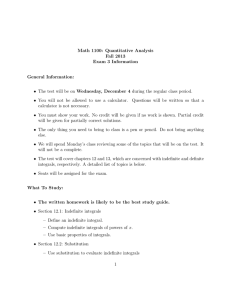Review problems for Exam #3
advertisement
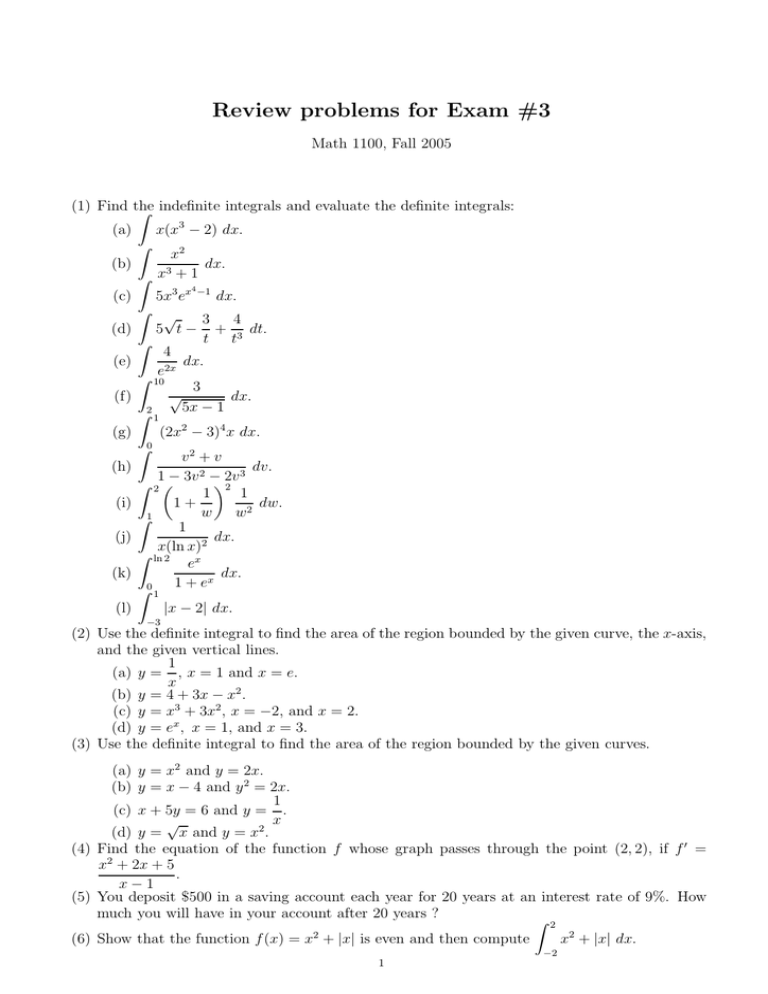
Review problems for Exam #3 Math 1100, Fall 2005 (1) Find the Z indefinite integrals and evaluate the definite integrals: (a) x(x3 − 2) dx. Z x2 (b) dx. 3 Z x +1 4 (c) 5x3 ex −1 dx. Z √ 4 3 (d) 5 t − + 3 dt. t t Z 4 dx. (e) 2x Z 10e 3 √ dx. (f) 5x − 1 2 Z 1 (g) (2x2 − 3)4 x dx. Z0 v2 + v (h) dv. 1− 3v 2 −2v 3 Z 2 2 1 1 (i) dw. 1+ w w2 Z1 1 dx. (j) x(ln x)2 Z ln 2 ex (k) dx. x Z0 1 1 + e (l) |x − 2| dx. −3 (2) Use the definite integral to find the area of the region bounded by the given curve, the x-axis, and the given vertical lines. 1 (a) y = , x = 1 and x = e. x (b) y = 4 + 3x − x2 . (c) y = x3 + 3x2 , x = −2, and x = 2. (d) y = ex , x = 1, and x = 3. (3) Use the definite integral to find the area of the region bounded by the given curves. (a) y = x2 and y = 2x. (b) y = x − 4 and y 2 = 2x. 1 (c) x + 5y = 6 and y = . x √ (d) y = x and y = x2 . (4) Find the equation of the function f whose graph passes through the point (2, 2), if f ′ = x2 + 2x + 5 . x−1 (5) You deposit $500 in a saving account each year for 20 years at an interest rate of 9%. How much you will have in your account after 20 years ? Z 2 (6) Show that the function f (x) = x2 + |x| is even and then compute 1 −2 x2 + |x| dx. 2 200 − x dP = and the number of (7) Find the change in profit if the marginal profit is given by dx 50 units increases by 4 from x = 100 (8) Find the consumer surplus and the producer surplus if the demand function is p2 (x) = 500−x and the supply function is p1 (x) = 1.25x + 162.5. (9) Find the indefinite integrals and evaluate the definite integrals: Z 1 x (a) dx. (x + 4)4 Z0 1 √ (b) x 3 1 − x dx. Z0 (c) xe4x dx. Z x dx. (d) x Z e (e) x4 ln x dx. Z e (f) x(ln x)2 . Z1 √ (g) x x + 2 dx. (10) A company expects its income c during the next 4 years to be modeled by c(t) = 150, 000 + 75, 000t. (a) Find the actual income for the business over 4 years. (b) Assuming an annual inflation rate of 4%, what is the present value of this income? (11) Find the Z indefinite integrals: 2 (a) dx. 2 Z 1−x 1 (b) dx. 2 Z 3x + x x+1 dx. (c) 2 Z 3(x2− 2) x −x dx. (d) x2 + x + 1
